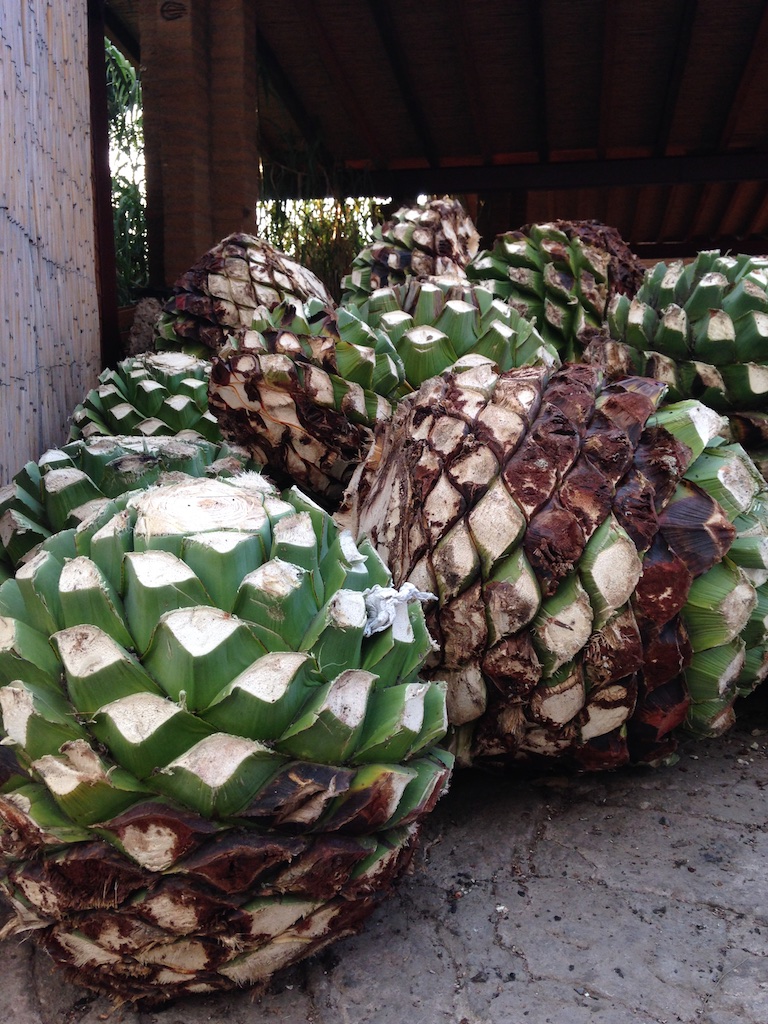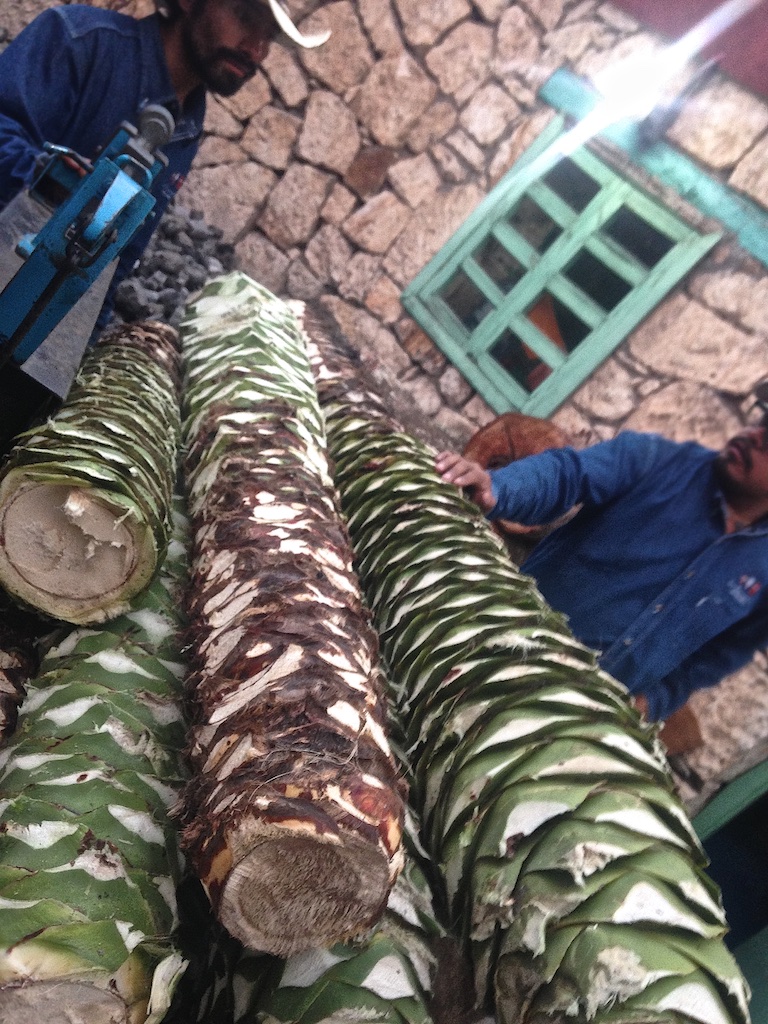Oaxaca 2015: Day 4 – Vinos de Mezcal

There's not really one blanket term to refer to all the different versions of distilled agave; at least not that I know of. Some people summarize tequila, mezcal, and the various other regional versions of agave spirits simply by calling them exactly that: agave spirits. I've heard the term "vinos de agave" tossed around here and there, but we're not really talking about wine here, are we? Maybe in a way we are; because the more I learn about the mindset and the philosophies concerning mezcal production, the more it sounds to me like wine. I was talking to Karina this morning about the agave species she used in her special "Arte de Mezcal" distillate; one of which was called sierrudo (pictured in the photo above). I asked her how she came upon this particular type and she told me the story of a farmer in Matatlan who had planted espadín, but somehow wound up with a bunch of sierrudo. "He found these gigantic piñas in his field years later—twice the size of his normal espadín—and wasn't sure what had happened," she said, "so I decided to buy some to see what a mezcal made from this agave would taste like."
You hear stories like this in the wine industry; about growers who plant a varietal in their vineyards, but end up with a bunch of pinot blanc, or some other varietal that somehow managed to sneak its way into the field. There have been plenty of growers who thought they were actually planting chardonnay, but ended up with pinot blanc because the vines, leaves, and clusters look so similar to one another. On top of that, I've spoken with a number of wine producers who label their wines as single varietal, but will tell you off the record that there's a bunch of other grapes blended in because in reality they're making what's called a "field blend"—a marriage of whatever happens to be growing on their property. When you're dealing with agriculture it's hard to be 100% black and white. Nature usually has its way of throwing you a curve ball, and that's not necessarily a bad thing. It's about working with what the earth gives you. With both wine and mezcal, the attention is primarily on the growing conditions and the flavors of the base materials themselves, whereas with whiskey the distillers are normally much more focused on the production methods and the maturation process.

The other species Karina used in her distillate was called cuishe—a long, thinner, wild agave that's part of a larger family of agaves silvestres. Going back to wine as an analogy, this would be consistent with grape varietals that are often part of larger families of similar types. Muscat, for example, has many different versions and relatives in the wine world—more than 200 actually; black muscat, muscat de alexandria, etc. In addition to cuishe, there's also madrecuishe, bicuishe—each a little different than its close relative. The wild cuishe that Karina used for her distillate was harvested from the mountains just south of the distillery. Much like with grapes, there's a huge difference in the flavors of mountain agave versus flatland, valley-floor agave. Napa, for example, has a region called Howell Mountain; an AVA known for producing powerful and long-lived Cabernets like Dunn. There's also Spring Mountain, where Keenan Winery makes incredible, structured wines with balance and delicacy. There's a number of reasons for the supremacy of mountain fruit, but much of it has to do with climate, drainage, and sun. When you grow crops on the side of a mountain slope, you don't have to worry about flooding because the excess water runs downhill. The grapes don't get too much sun because at some point during the day it will be on either side of the hill. Higher elevations also tend to be cooler, which allows for a longer and slower ripening process (you don't make a flavorful soup by boiling your vegetables in water for five minutes). The same is apparently true for mountain agave.
Take everything you know about making a great wine from the best possible grapes, and it all applies to the production of mezcal. The various varietals that impart a variety of flavors. The co-fermenting of various types to create a more balanced cepage. The desire in most cases to minimize the impact of wood on the ultimate flavor of the product (or add it in, depending on the producer's stylistic preference). The way that these mezcal producers talk about their mezcales is identical to how a winemaker talks about his or her wines. They're both stressing the same agricultural fundamentals and the same details of importance when referencing the quality of their products. Maybe that's how we should start talking about mezcal in the United States—like we do with wine. Maybe producers should start marketing more of their products to the sommelier crowd, rather than the cocktail culture. Just some food for thought.
-David Driscoll
